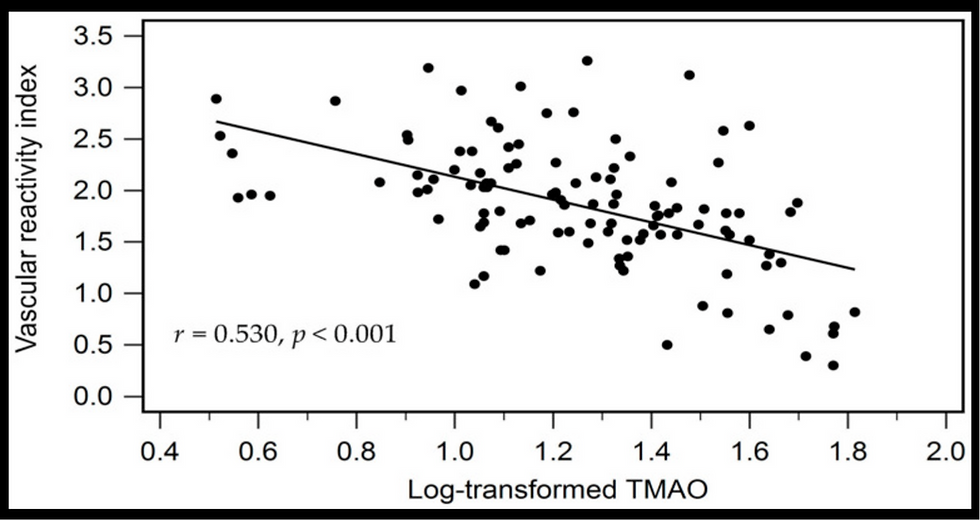Endothelial Dysfunction in In Young Premenopausal Women Predicts Osteoporosis
- heartlung
- Jan 16, 2023
- 3 min read
Scand J Med Sci Sports. 2018 Dec 12. doi: 10.1111/sms.13354. [Epub ahead of print]
Impaired Vascular Function in Exercising Anovulatory Premenopausal Women is Associated with Low Bone Mineral Density.
O’Donnell E1, Scheid JL2, West SL3, De Souza MJ4.
Author information 1School of Sport and Exercise Health Sciences, National Centre of Sports and Exercise Medicine, Loughborough University, Loughborough, UK.2Department of Health Promotion, Daemen College, Amherst, New York, United States.3Department of Biology and Trent/Fleming School of Nursing, Trent University, Peterborough, Ontario, Canada.4Penn State University, Department of Kinesiology, University Park, Pennsylvania, United States.
Abstract In estrogen deficient postmenopausal women, osteoporosis shares a common link with cardiovascular disease risk, including endothelial dysfunction. The current study sought to examine associations between bone mineral density (BMD) and endothelial function in estrogen deficient premenopausal women with exercise-associated menstrual disturbances. Recreationally trained women (24.3±0.8 years; overall mean±SEM) who were estrogen deficient (amenorrheic or eumenorrheic anovulatory cycles; E2Def; n=13) or estrogen replete (eumenorrheic ovulatory cycles; E2Rep; n=14) were studied. Total body and lumbar BMD (L1-L4) were determined using dual energy X-ray absorptiometry. Serum markers of oxidative stress (oxidised low-density lipoprotein; OxLDL), energy deficiency (triiodothyronine), and bone turnover (osteocalcin, c-telopeptide X, P1NP) were assessed. Estrogen exposure was determined by assessing daily urinary estrone-3-glucuronide (E1G) across a monitoring period. Calf blood flow (CBF), an index of endothelial function, was measured using strain-gauge plethysmography. CBF, total body and L1-L4 BMD, triiodothyronine and E1G were lower (p<0.05), and c-telopeptide crosslinks higher (p<0.05) in E2Def. Osteocalcin and OxLDL did not differ (p>0.05) between groups. L1-L4 BMD, osteocalcin and E1G were the strongest predictors of CBF (R2 =0.615, p<0.001). CBF was the strongest predictor of L1-L4 BMD (R2 =0.478, p<0.001). L1-L4 (r=0.558, p=0.008) and CBF (r=0.534, p=0.004) were independently correlated with E1G. In young recreationally trained premenopausal women with anovulatory menstrual disturbances, low CBF predicts decreased lumbar BMD, suggesting impaired peripheral endothelial function may predict early unfavorable changes in bone metabolism. This finding may be of relevance in the early detection of cardiovascular and bone health decrements in otherwise healthy estrogen deficient premenopausal women. This article is protected by copyright. All rights reserved.
KEYWORDS: amenorrhea; anovulation; bone health; cardiovascular; estrogen
Biomed Res Int. 2018 Dec 11;2018:7918091. doi: 10.1155/2018/7918091. eCollection 2018.
Endothelial Function in Children with Acute Lymphoblastic Leukemia (ALL) May Reflect the Clinical Outcome.
Doroszko A1, Niedzielska E2, Jakubowski M1, Porwolik J2, Turek-Jakubowska A1, Szahidewicz-Krupska E1, Sieczkowski B3, Dobrowolski P4, Radziwon A5, Skomro R6, Derkacz A1, Mazur G1, Chybicka A2, Szuba A7.
Author information 1Department of Internal Medicine, Hypertension and Clinical Oncology, Faculty of Medicine, Wroclaw Medical University, 213 Borowska St., Wroclaw, 50-556, Poland.2Department of Pediatric Oncology, Hematology and Bone Marrow Transplantation, Wroclaw Medical University, 213 Borowska St., Wroclaw, 50-556, Poland.3Clinic of Neurology, Regional Hospital, Rzeszów, Poland.4Department of Congenital Heart Diseases, Institute of Cardiology, Warsaw, Poland.5Glostrup Research Institute, Glostrup, Denmark.6Division of Respiratory and Critical Care Medicine, Department of Medicine, University of Saskatchewan, Saskatoon, Canada.7Division of Angiology, Faculty of Health Science, Wroclaw Medical University, 5 Bartla St., Wroclaw, 51-618, Poland.
Abstract Endothelial dysfunction is a common feature of early complications of hemato-oncologic therapy. The aim of our study was to assess the profile of endothelial function at diagnosis time, then during initial treatment phase of acute lymphoblastic leukemia (ALL), and to verify the presence of its correlation with early clinical outcome (ECO). 28 ALL children and 18 healthy age-matched control ones were recruited. Study group was examined at baseline and at 33rd and 78th day of treatment. At each protocol step the endothelial function was assessed by measurement of sP-selectin (CD62-P), PAI-1(serpinE1), sE-selectin (CD62E), sICAM-1(sCD54), sVCAM-1(sCD106), and VEGF concentrations. Higher baseline sICAM-1 and sVCAM-1 levels and lower sP-selectin and VEGF were observed in children with ALL. sICAM-1, sVCAM-1, and sE-selectin levels were decreasing following the treatment with protocol I. Higher sE-selectin and lower baseline sICAM-1 levels were observed in children treated unsuccessfully. Lower PAI-1 levels were observed in children who survived. Higher baseline sE-selectin levels and lower sICAM-1 and VEGF were observed in children treated unsuccessfully. A decrease in sE-selectin and lower PAI-1 at the 78th day of therapy were associated with better ECO. High baseline VEGF and sE-selectin levels, significant increase in PAI-1, and low initial sICAM-1 levels are prognostics for poorer prognosis in the ALL children.
![Lipoprotein(a) levels predict endothelial dysfunction in maintenance hemodialysis patients: evidence from [VENDYS] vascular reactivity index assessment](https://static.wixstatic.com/media/dac531_5285607cc591409a9d83746f042af7c6~mv2.png/v1/fill/w_980,h_980,al_c,q_90,usm_0.66_1.00_0.01,enc_avif,quality_auto/dac531_5285607cc591409a9d83746f042af7c6~mv2.png)


Comments